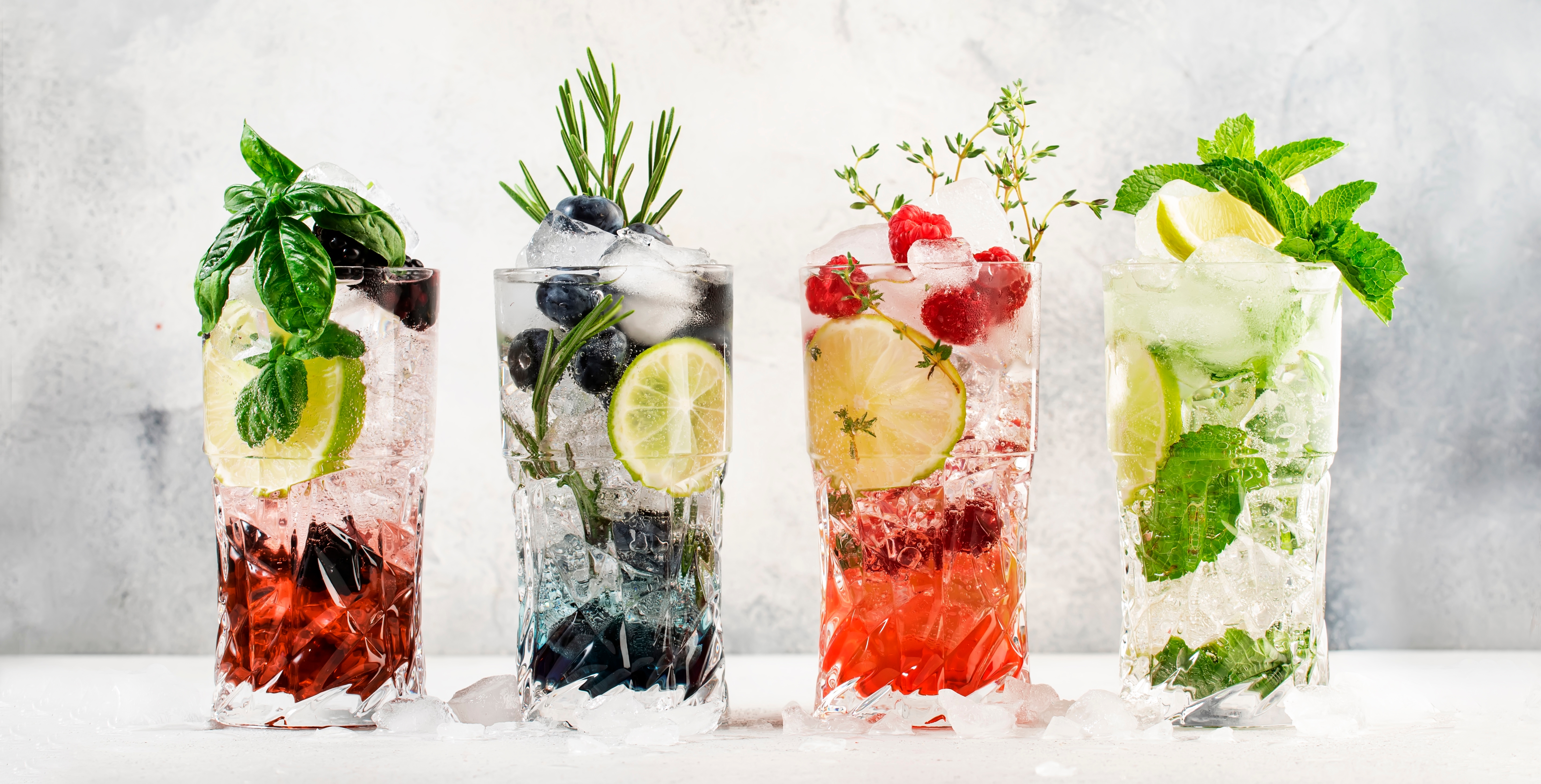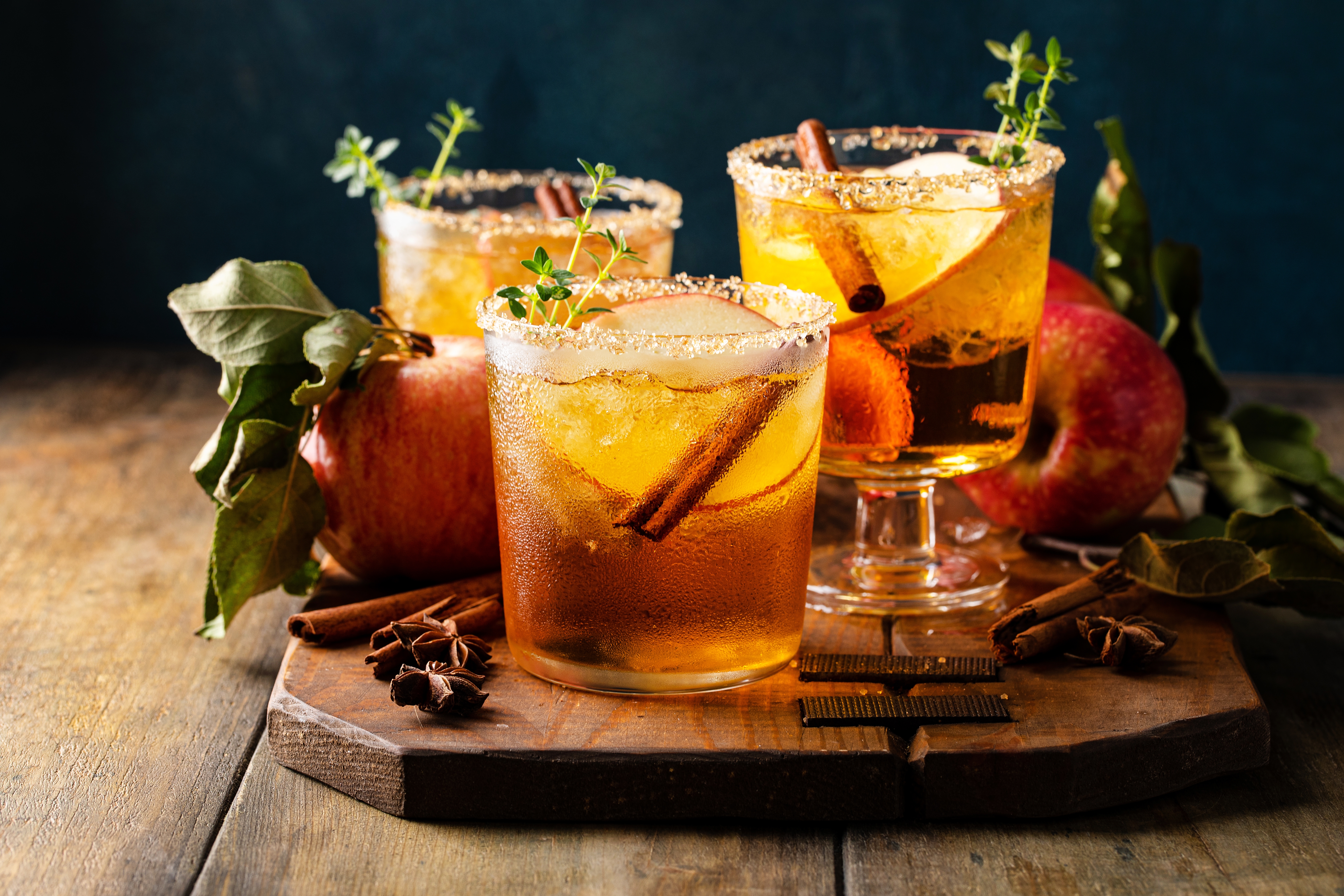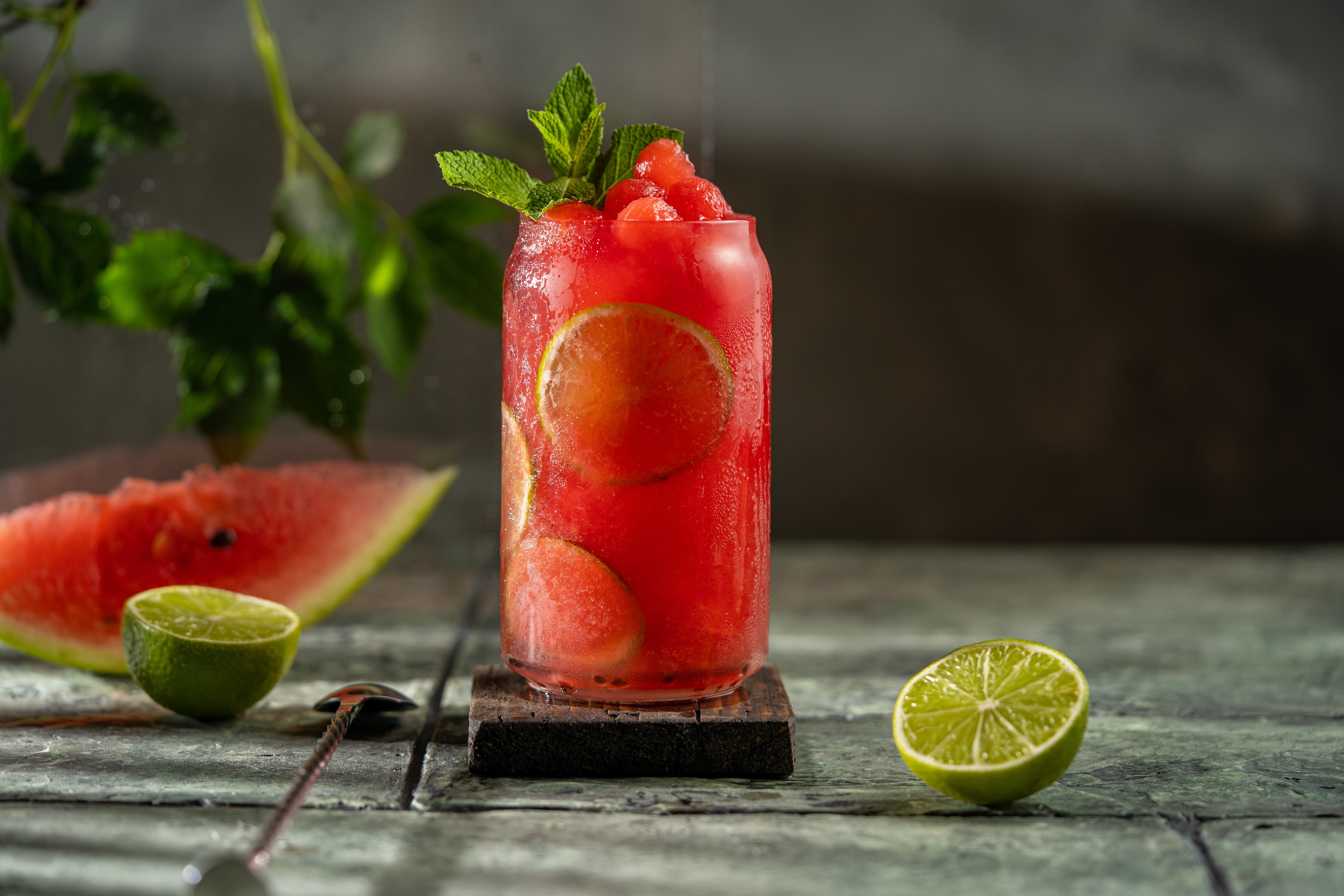Free digital copy
Get Speciality Food magazine delivered to your inbox FREE
Get your free copy
No one can forget the great British gin buzz of the late Noughties. Inexpensive and quick to produce (compared to rum and whisky), it was a neat ‘in’ to the trade, which saw the number of distilleries in England bloom to triple that of Scotland for the first time in history.
Consumers bought into bold, fresh marketing campaigns, which ushered in the spirit as a sophisticated serve. They were attracted by the allure of myriad exotic-sounding botanicals…cubeb, seagrass, rock samphire, grains of paradise.
That era, say experts across the board, is over. And while there continue to be rumblings about rum as the ‘next big thing’ (a conversation that’s been in the mix for at least a decade), a surprising twist has occurred, with non-alcoholic or low alcohol spirits carving out a strong following and mainstream presence like never before.
In fact, no and low has become so prevalent that new terms have been coined for its consumption, from ‘book ending’ (starting and finishing your evening with a non-alcoholic beverage), to ‘zebra striping’ (alternating between alcoholic and non-alcoholic drinks.
KAM Insight’s 2024 report clearly highlights a changing tide in the industry. Managing director, Katy Moses, says large numbers of adults in the UK are actively moderating their alcohol consumption today, driven by multiple factors, from an urge to improve physical or mental wellbeing, to saving money.
Interestingly, the pattern is being seen across all age groups, on all days of the week, with one in four over 18s questioned saying they employ tactics to moderate to some extent.
What’s key, she adds, is the dwindling consumption of alcohol doesn’t mean a decrease in the demand for drinks experiences. “People don’t want to miss out on all the occasions where alcohol is normally present – going to the pub with friends, celebrating a birthday, enjoying a beer while watching sport, for example. The research identified that many are drinking differently now when they go out, and embracing new moderation tactics. The future of socialising in the UK will certainly be less centered around alcohol.”
Analysts at the Wine and Spirit Trade Association (WSTA) say they have seen a marked fall in volumes across the majority of alcohol categories, with the July market report seeing spirits in a double-digit decline of –10% during the past 12 months.
“Part of this is down to the impact of the cost-of-living crisis,” says chief executive Miles Beale, “but also a noticeable change in drinking habits. There are clear trends of consumers choosing to drink less, or finding alcohol alternatives. The no and low alcohol category remains relatively small, but it is consistently growing.” Alcohol-free spirits, Miles adds, have seen the largest percentage rise within the category in volume sales during the last year, up an incredible 23%.
An impact so large WSTA has been prompted to publish a series of no and low alcohol guides in a bid to “clear up confusion over the marketing, labelling and production” of these drinks, with Miles adding the organisation is calling on the government to boost the sector by “supporting the simplification of the production, labelling and marketing of low and no alcohol drinks, including raising the no alcohol threshold to 0.5% ABV”.
Insight experts at IWSR say low-alcohol volume sales almost doubled in 2023, adding they expect “considerable growth” over the next few years, particularly in dark spirit non-alcoholic alternatives, which are finding their footings in the industry right now.
An industry which is expanding at a rate of knots.
Three Spirit co-founder, Dash Lilley, says he continues to be excited by the strong demand for the brand’s non-alcoholic alternatives drinks, as the low and no market becomes its own category.
While Dry Drinker managing director, Daniya Stewart, is reporting a huge growth in the space “with consumers interested in direct alternatives to alcohol, as well as great-tasting adult drinks.”
Alistair Frost, founder of Pentire Drinks, says the brand has grown at an average rate of 100% every year since its inception, demonstrating the power of low and no. He believes the sector is “definitely here to stay. How it looks in the future is the exciting thing that’s still largely undefined. We’re currently growing at over three times the speed of the growth of the category.”
Over at Talonmore Drinks Company, sales have been so strong that managing director, Lewis Kennedy, says they’ve had to move sites to upscale production.
And founder of The Virgin Mary’s ‘dry bar’ collective, Vaughan Yates, says there’s clearly a swell of interest around these products. “After five years in operation we have seen that mindful drinking is not just a trend, but a movement.”

“In a word, moderation,” says drinks journalist Chris Losh, founder of the World Alcohol-Free Awards, talking about the steep incline of interest in this category. “There’s a growing number of people who don’t drink at all, and it’s certainly a thing for people under the age of 25. The biggest growth, though, is from people who still drink alcohol, but want to drink less of it. They might only have two or three alcoholic drinks, mixing in a couple of alcohol-free drinks alongside them. Or they’re switching to alcohol-free options during the week.”
Put simply, Chris says, consumers want non-alcoholic options. “There’s a mountain of research out there showing how much less people are drinking. A good recent report by KAM shows drinkers under the age of 55 are drinking more moderately than they used to, and 4.7 million Brits are now drinking half of what they used to. That’s a big shift.”
If you have 40 million people not drinking, or moderating, they’re “looking for alternatives” says Chris. “It could be a can of coke, but if I’m not drinking, I’m not switching to that. I want someone to present me with something artisanal, and good.”
Health is another consideration says Sophie Brisbourne-Rhodes, global CMO of CleanCo. “What we are seeing is a major trend towards ‘sober-curiosity’ - people wanting to regain a healthier relationship with alcohol, reduce their overall intake, and enjoy their drinks equally, whether they be alcohol or not.”

Chris says the power of low and no has been supercharged as large brands have come onboard, no longer considering the category a poor relation. “You’ve now got Tanqueray Zero, and Gordon’s Zero. All the big beer brands have alcohol-free in their range.”
The other change that’s had an impact on the sector is the evolution in the quality of alcohol-free spirits. “Smaller brands are getting more adept, and are being more ambitious,” Chris adds. “They have finessed what they’re doing. In our second awards this year we noticed, across the board, brands that might not have been in the running for a medal last year, are more in the mix this year. The standard has raised.”
As this happens, niches are also being carved out in low and no across the world, Chris says. “In Northern Europe we’re seeing aperitif-type drinks coming through, in Australia it’s RTDs, and in the US they’re big into drinks with functional ingredients that might have an impact.”
Dash says the category certainly has “exploded” in a noticeable way, with retailers and consumers having a greater understanding of what low and no mean. “When we first started it could be an uphill battle just explaining to people what we were – non-alcoholic elixirs full of active plant ingredients, adaptogens and nootropics. It could even be difficult justifying the need for a non-alcoholic drink.”
Today, growth shows, he adds, there is a demand for these alternatives. “It’s great, as it means we can spend less time justifying the product’s existence, focusing instead on celebrating its benefits and taste.”
Paul Mathew, founder of Everleaf, shares this experience, saying the dynamics within low and no were changed forever when Seedlip put its flag in the sand which “created a gold rush effect” as other brands sought to jump on the bandwaggon. At the beginning there were brands that had “no concern for quality, which damaged the category”.
“But in the last couple of years we’ve seen that change, and some really good products have come onto the market. Five years ago we would be trying to put our business case forward as to why we need non-alcoholic options. Today, people approach us wanting to increase their non-alcoholic listings. It’s lovely to see, and the rate of sales has been growing and growing and growing. We’ve close to doubled each year since launching.”
Sophie says the changes in the way we choose to drink, and the choices we are making, are clear to see…as is the impact of the ‘new norm’ of drinking less or no alcohol. “It’s perfectly normal to expect at least someone in a social group won’t be drinking in every social occasion,” she explains. Recent studies show one in three pub visits in the UK are now alcohol-free. That’s an impressive shift from the stats we were looking at just a few years ago.”
Perceptions of drinking, Sophie adds, are changing at a rapid pace – arguably quicker than any other consumption category. “Post-Covid, consumers are more interested in their general wellbeing. People are more aware of what’s actually important in their lives – their health, and spending quality time with loved ones, both of which go hand-in-hand with a huge overhaul of the classic drinking culture.”
The industry itself, Sophie thinks, has played a major role in this shift. Gone are the days of the only non-alcoholic options being water, soda or sugary mocktails. “We’re seeing more and more venues putting serious thought into their non-alcoholic options with a curated menu, or even offering consumers the option to make their full-strength cocktail or spirit and mixer ‘clean’ with the use of a non-alcoholic equivalent.”
“In my time in the drinks industry, low and no spirits have gone from a concept being tested out in bars, to now being an essential section on menus and back bars,” agrees Lewis, who has noticed a movement in innovation and experimentation across the hospitality industry particularly. “Bartenders are giving the same attention to non-alcoholic cocktails as their traditional counterparts.” And these drinks are “driving the market to compete with alcohol, and providing customers with more high-quality options”. He believes the movement will continue “and we’ll see more and more people socialising at home and in venues without alcohol”.
This is backed up by Vaughan who, at his venues, has seen customers looking for “interesting drink options that offer complexicty and a wide diversity of flavours”, while being “mindful and seeking balance and moderation”. Visitors to the group’s bars, he adds, are becoming “keenly aware of the negative health effects of consuming too much alcohol, along with its high calorie content and its impact on premature ageing”.

Dry Drinkers’ Daniya says drinks that are not direct replacements are proving popular, such as Botivo. “They appeal to both non-drinkers and substitutors as they can be drunk as an equivalent to a G&T, and as a new drink.
“We are also seeing great interest in cocktails in cans – something people can drink easily at a party or a festival without having to make up their own drinks. We are about to launch a new brand called Citizen Spritz which has a range of great cocktails in a can.”
Vaughan says what’s popular depends on the venue. “In Europe we have great success with the Three Spirit range of products. They are excellent for building complex cocktails, and each one has its own array of functional botanicals to elevate the mood naturally. In the Middle East we work with our partner, Drink Dry, to bring the best range of 0% products to our bars. This includes brands like Crossip, Vintense, Caleno and Wilfred’s.”
Adam O’Connell, from the Master of Malt buying team has four favourites. “Lyre’s Spirit Co is one of the better providers of non-alcoholic spirits that mimic traditional alcoholic drinks,” he says, picking the “nutty” and “bittersweet” Amaretti as a standout product. “Pentire Seaweed is a botanical spirit with a bright coastal flavour that makes for an excellent alternative to gin in a G&T,” he adds, giving further nods to Almave Ambar Non-Alcoholic Blue Agave Spirit, and Three Spirit Social Elixir.
Specialist retailers should not be afraid to experiment within the category, says Chris. Gin alternatives, he thinks, are a good place to start, and a recognisable point of reference for consumers. But he suggests having at least three or four non-alcoholic varieties on offer at any time.
Stores with a hospitality setting on site need to put the work in too. “A huge amount of money is not being tapped into because people’s alcohol-free offering is substandard,” he explains, saying he thinks the country is missing out on billions of pounds worth of sales.
“KAM’s report says customers are defaulting to tap water, and that alone is costing £800 million a year in missed sales in hospitality. Where people say, ‘I’m not drinking’, we could be selling them alcohol free wine, beer or spirits and making a profit. It’s such a big trend and it’s global.”
Paul says he thinks the ripe is ripe for retailers to tap into what is a hugely growing category that’s attracting more customers than ever before. “A lot of people are now trying these drinks in the on trade and retail,” he says. “It’s important to diversify, and make sure you stock a few interesting products.” One of the biggest mistakes retailers make, he adds, is trying to think of low and no as an entirely new category. “Around 90% of users are also consumers of alcohol, they are just trying to moderate. Think of these drinks as an extension to your alcohol offering. And make sure you have the same selection as your alcoholic drinks landscape – something for whisky, rum and gin drinkers,” Paul adds.
“This is what the market is looking for,” says Lewis. “We would not still be in business if our customers didn’t like what we create. With the health and wellbeing market increasing, and the public finding new ways to socialise, it is now no longer desirable to sacrifice diet, driving abilities or a clear mind, just to have an alcoholic beverage.”
Shoppers want quality over quantity Lewis adds, saying they don’t want to settle for a simple juice or fizzy drink as an alcohol replacement. “Non-alcoholic spirits provide the foundation for a multitude of complex and sophisticated drinks that can be enjoyed at home or in venues. This wave of socialising is not just a trend, it’s here to stay.”
Sophie agrees with Lewis that moderation isn’t going anywhere. “As more and more people rebalance their relationship with alcohol and go on to share their experiences with friends and family, who in turn adopt these behaviours themselves, the whole movement just snowballs. I truly believe we’re only a year or so away from pub visits in the UK being 50% alcohol free,” she says.
She’s also seeing more and more big brands jumping on board with alcohol free takes on classic spirits, and major retailers giving them space, which will do no harm to the category’s visibility, in turn driving greater consumer awareness, and sending these same consumers into speciality retail for niche and more interesting products.
“It’s a huge confidence boost for the category when the big guys sit up and take notice,” says Sophie. “The fact they are putting serious money behind the space is proof enough that the demand is there. But I’d like to think that consumers will continue the trend we’re seeing of backing smaller, challenger players who build communities around their brand and look to give back.”
A micro trend Vaughan thinks will continue to blossom as alcohol-free spirits grow in number, is functional ingredients, tapping into the lucrative health and wellbeing market. We will see more drinks with an increased focus on adding botanicals and adaptogens with mood-boosting effects, he says.
“It is absolutely an area of growth,” agrees Dash. “And we hope to be one of the brands leading the way. Our drinks are packed full of powerful plants, each with an interesting history, and actives that I could honestly talk about all day.” These include guayusa, schisandra and ginseng, which are being used to enhance energy; lion’s mane, damiana and passionflower, thought to make drinkers more sociable; and hops, valerian, lemon balm and ashwagandha, which are reported to have a relaxing, stress-relieving effect.
Being aware of functional drinks, and functional ingredients is something that will stand retailers in good stead as they look to stock for the future.